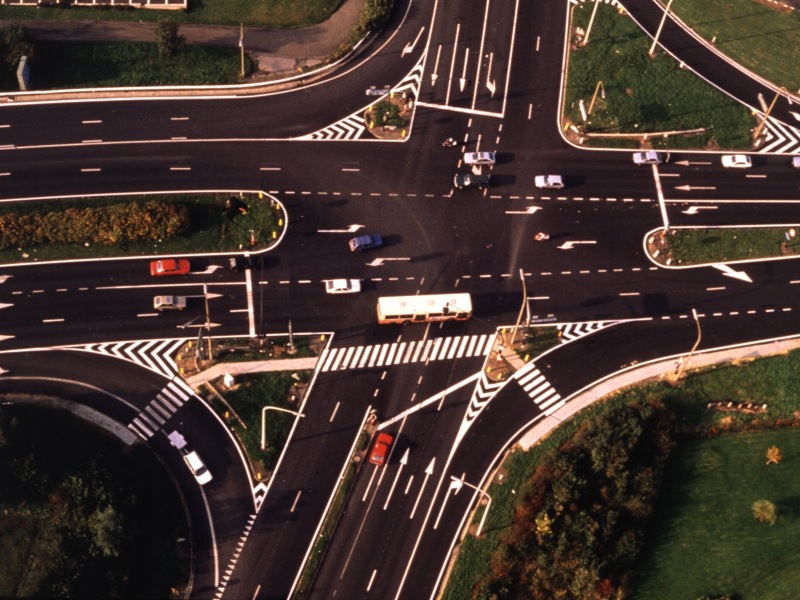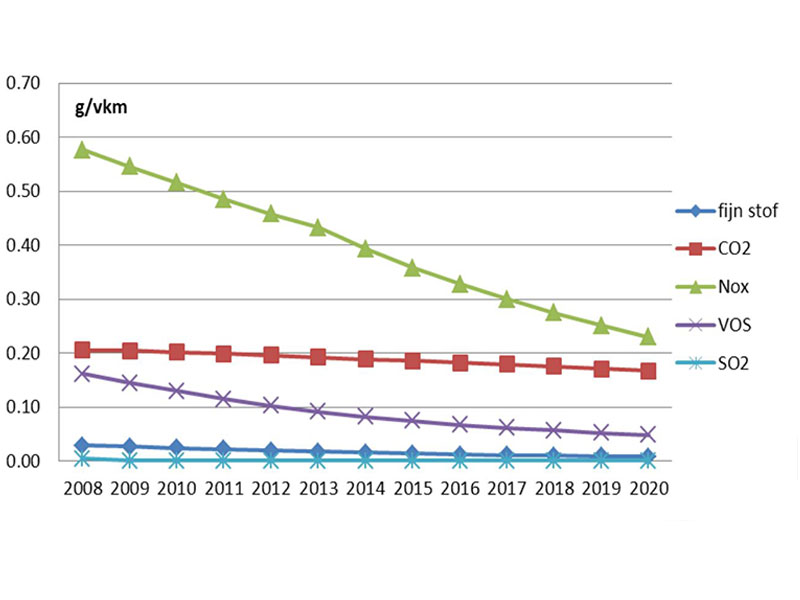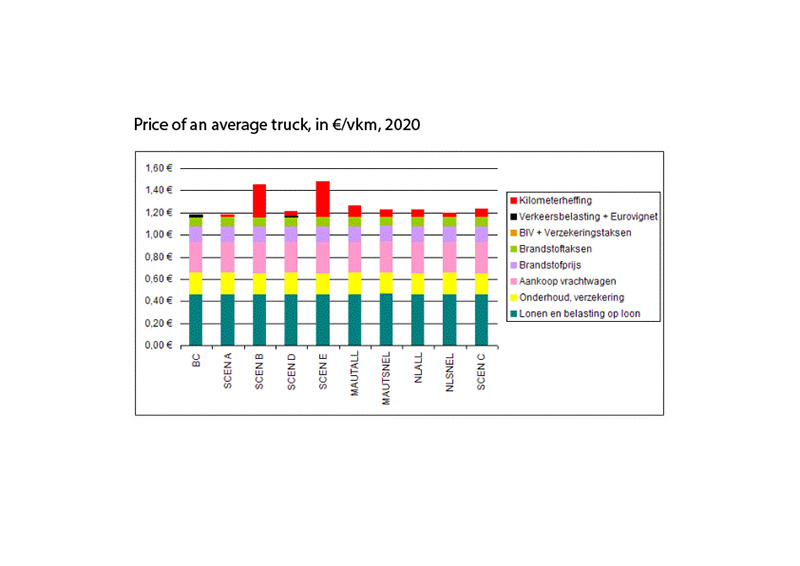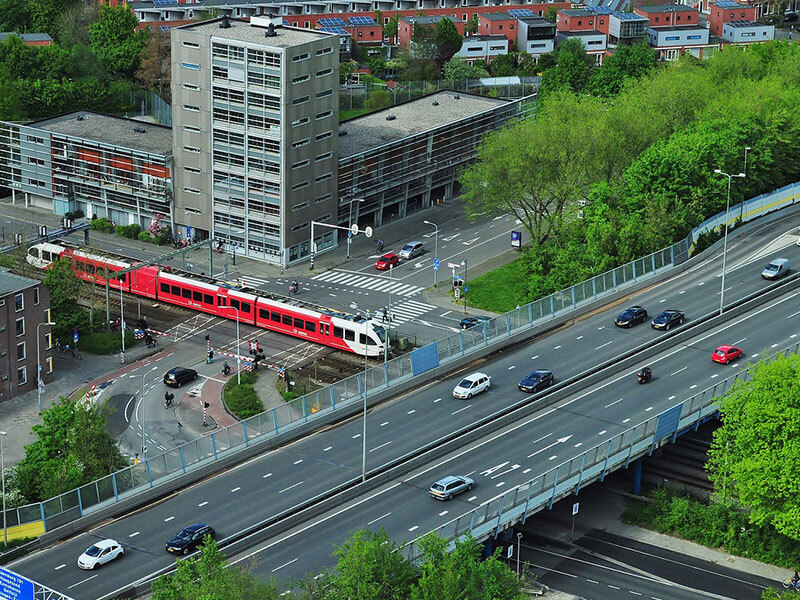ISEEM
ISEEM stands for Integrated, Spatio-Economic and Ecological Model. TML developed ISEEM in cooperation with the University of Ghent, the Federal Planning Bureau, and the Facultés Universitaires de Namur. The development of the model was commissioned by the Federal Institute of Science and Technology (FWT/Belspo). In a second project for IWT, TLK further developed the ISEEM model and extended it to the Benelux.
The ISEEM model is a dynamic and regional general equilibrium model. These models represent the economy of a country or region based on knowledge of trade, regional economics, and microeconomic theory. The main basic data of the model are parameters that determine the behaviour of consumers and firms, an initial dataset of monetary transactions and trade within the economy, and data on the transport network. The model describes the behaviour of a number of representative agents: consumers, producers, the government, transport firms, and investors. The agents of our model work, live, export and import goods and services, pay and collect taxes, buy transport services, and move between the regions of the model. Their behaviour is derived from microeconomic theory, which is the basis of ISEEM.
The model is balanced, meaning that production and consumption are in equilibrium and all factors of production (capital goods, labour, and energy) are used. We assume that the dataset of the model in the initial situation is a solution of the model. The model's mathematical formulas are thus aligned with the data from the database, so the model replicates the baseline situation. A model simulation is basically the introduction of a small deviation in this baseline situation, after which a powerful solution algorithm computes a new equilibrium.
The application of ISEEM follows a number of logical steps. A concrete policy question is first translated into a change in the model's economic parameters. For instance, we evaluate the effects of a new tax or subsidy, an investment in (transport) infrastructure, or a change in the availability of labour, capital, or another production factor. Sometimes this requires additional data or a small addition to the model's code. The model is then run to compare the model's solution with the model's initial values.
The outcomes are relevant economic variables and indicators. These can be the output (in monetary value) of different sectors, but also indicators such as unemployment, welfare of different population groups, consumption, trade shifts between regions, or changes in commuting labour and transport trips. The ISEEM model also allows to examine impacts on different income classes. In addition, both impacts on energy use and environmental effects can be investigated.
The ISEEM model is a dynamic and regional general equilibrium model. These models represent the economy of a country or region based on knowledge of trade, regional economics, and microeconomic theory. The main basic data of the model are parameters that determine the behaviour of consumers and firms, an initial dataset of monetary transactions and trade within the economy, and data on the transport network. The model describes the behaviour of a number of representative agents: consumers, producers, the government, transport firms, and investors. The agents of our model work, live, export and import goods and services, pay and collect taxes, buy transport services, and move between the regions of the model. Their behaviour is derived from microeconomic theory, which is the basis of ISEEM.
The model is balanced, meaning that production and consumption are in equilibrium and all factors of production (capital goods, labour, and energy) are used. We assume that the dataset of the model in the initial situation is a solution of the model. The model's mathematical formulas are thus aligned with the data from the database, so the model replicates the baseline situation. A model simulation is basically the introduction of a small deviation in this baseline situation, after which a powerful solution algorithm computes a new equilibrium.
The application of ISEEM follows a number of logical steps. A concrete policy question is first translated into a change in the model's economic parameters. For instance, we evaluate the effects of a new tax or subsidy, an investment in (transport) infrastructure, or a change in the availability of labour, capital, or another production factor. Sometimes this requires additional data or a small addition to the model's code. The model is then run to compare the model's solution with the model's initial values.
The outcomes are relevant economic variables and indicators. These can be the output (in monetary value) of different sectors, but also indicators such as unemployment, welfare of different population groups, consumption, trade shifts between regions, or changes in commuting labour and transport trips. The ISEEM model also allows to examine impacts on different income classes. In addition, both impacts on energy use and environmental effects can be investigated.
Recente projecten

SCBA 3RX
This report is an update of the SCBA for the 3RX project. The new calculations lead to an improvement in the general benefit-...

Rebound Effects
What are the indirect or second order effects of environmental measures?

ISEEM Benelux
We designed an integrated, regional economic model for Benelux.

E40 - Haspengouw
We conducted an SCBA for the connection between Sint-Truiden (Haspengouw) and the E40.

Road pricing
What would be the consequences of a kilometre charge for trucks in Flanders?

ISEEM
We collaborated on the development and implementation of an integrated spatial-economic-ecological model for Belgium.

RAEM
We developed the new version of the Spatial Computable General Equilibrium (SCGE) model RAEM for the Netherlands.

